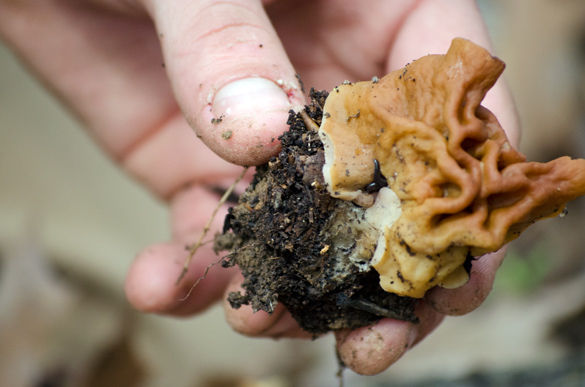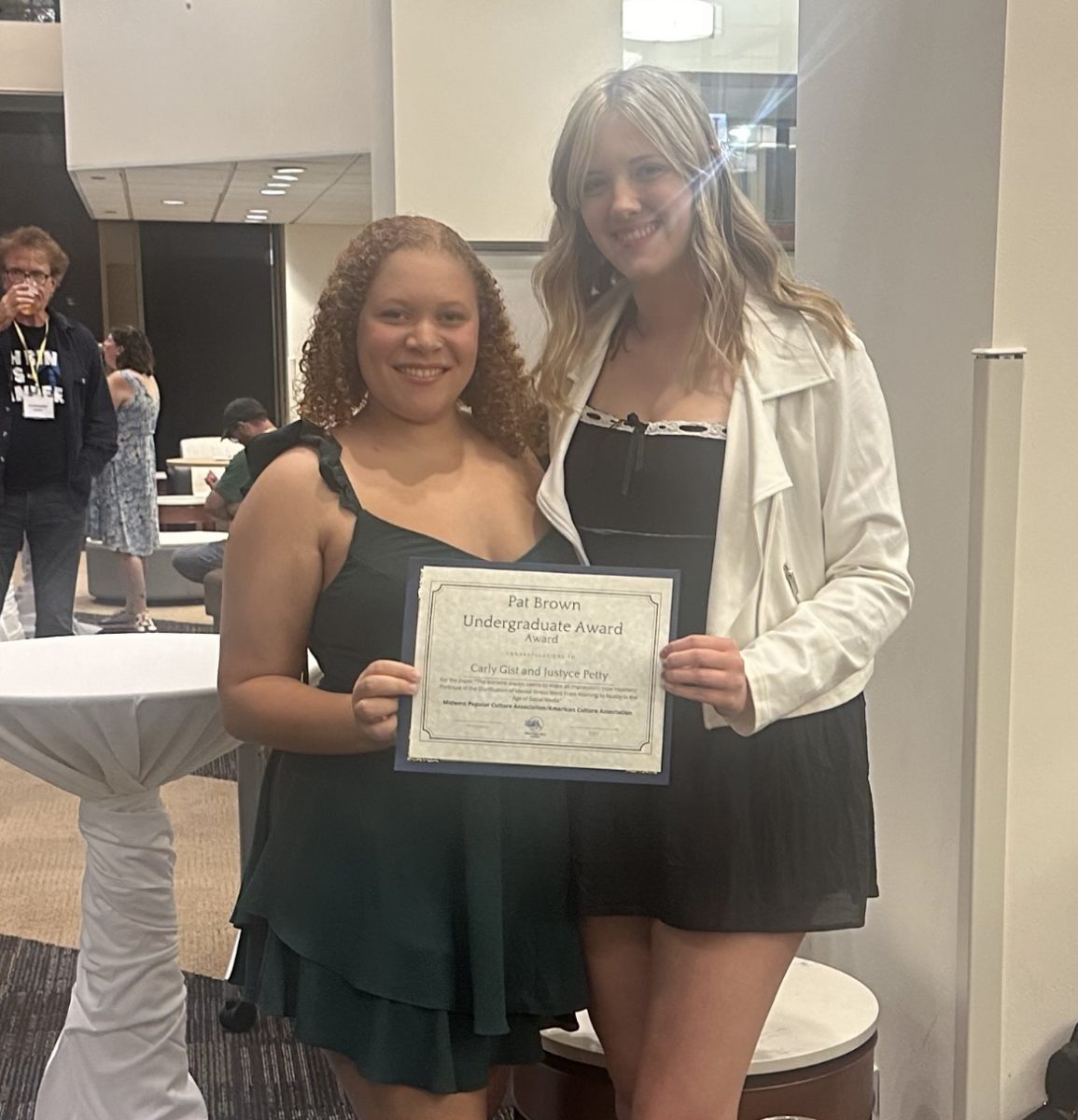Morels fuel spring fever
April 5, 2015
From the Mario Bros. to mind expansion, various mushrooms have had distinct roles in cultures around the world. But come April in southern Illinois, the only mushroom playing with people’s minds is the morel.
This particular fungus can only be found for a few weeks each spring and is prized for its culinary value, selling for $15 to $25 a pound at the Neighborhood Co-op, located in the Murdale Shopping Center.
With warming temperatures and late night rainfalls, now is the perfect time to begin hunting morels, said Travis Neil, a graduate student in plant biology from Yorkville.
Advertisement
Neil, who is beginning his seventh year of hunting morels, said southern Illinois is by far the best place in the state to find them.
“Historically, I get pounds in a day,” he said. “But I try not to destroy [the habitat] so I can come back year after year.”
Overharvesting is one concern about hunting, but different areas have restrictions on collecting mushrooms.
Southern Illinois has a variety of public property owned by various agencies ranging from the U.S. Forest Service and Illinois Department of Natural Resources to U.S. Fish and Wildlife, said Jennifer Randolph, a natural resources coordinator at Giant City State Park.
“Every agency has its own guidelines,” she said. “While some places you can hunt morels wherever you want, there are other places where there are restricted areas.”
Giant City State Park—located about a 15-minute drive south of SIU—encompasses 4,055 acres, but on the north side 110 acres have been set aside as a nature preserve, and no collecting of any kind is allowed there.
Randolph said hunters should be courteous of others by giving them space when they are mushroom hunting, and to take a bag with holes in it—such as a mesh bag onions are purchased in. These bags allow for the mushrooms to be easily carried while distributing reproductive spores throughout the forest, increasing the likelihood of more morels in future seasons.
Advertisement*
Randolph, who also gathers morels, has found them in pine stands and said Giant City is a popular spot for amateur mushroom hunters.
She said while there are some with years of experience, nobody is truly an expert at hunting morels.
“If they tell you they’re an expert and they know where to find them, they’re lying,” Randolph said. “Morels are a cantankerous little mushroom, because you might have a spot that you’ve had success at for 10 years or so, then you go one year and there is not a single morel to be found.”
Different people have different techniques they follow when hunting morels. Old-timers will urge beginners to start under ash, elm and cottonwood trees, but Randolph said there is no guarantee of success.
“It is really just kind of a gamble when you morel mushroom hunt,” she said. “They kind of have their own way of popping up wherever they want to.”
Joe Mcfarland, co-author of a field-to-kitchen guide for edible wild mushrooms in Illinois, said there are several species of false morels, which should not be consumed and can be identified by being sliced open.
“[True morels] are completely hollow inside,” he wrote in an email. “I compare them to those chocolate Easter bunnies that are hollow shells. And while solid chocolate Easter bunnies… do exist, no solid morels exist.”
He said false morels, which are poisonous, are not hollow when sliced open and depending on the species, there may be wrinkled folds of tissue inside or they might appear to be stuffed with cottony filaments.
False morels have high concentrations of monomethylhydrazine, which is a potentially carcinogenic toxic, according to the Centers for Disease Control and Prevention. True morels have a small quantity of the toxin and must be cooked before consumption.
McFarland, who has been studying fungi for more than 20 years, said poisoning from MMH—the toxin in false morels—can lead to a splitting headache, vomiting, dizziness and muscle cramps, but deaths from ingesting it are uncommon.
The caps of true morels generally resemble a sea sponge with pits and pores, while false morels have wrinkled and brain-like caps. McFarland said since false morels are not hollow like true morels, false morels tend to be heavier.
True morels tend to grow in proximity with one another and when one is spotted, more are likely nearby.
However, ecologically minded hunters like Neil do not grab everything they see. In fact, he leaves about 90 percent of the mushrooms intact when he finds a grouping to help maintain a stable population, he said.
McFarland said the secret spots where morels regularly pop up are never mentioned among serious morel hunters.
“Die-hard morel hunters are known to go to their grave without revealing the most treasured of foraging secrets,” he wrote. “So morel hunters sneak about the woods in secrecy, jealously guarding the ultimate foraging knowledge.”
The season has just begun—by Sunday, only one morel was found by the six interviewed hunters. All of the gatherers said their favorite part about hunting morels is simply being in the woods.
Neil said the season lasts from mid-April to mid-May, and the yellow morels—the most popular variety—are usually the last to show themselves.
“The best luck I’ve had, for whatever reason, has been on April 24,” Neil said. “It’s been a really solid date every year.”
McFarland said morel season coincides with the first outbreaks of warm weather.
“People stampede toward the woods when morels pop up, partly to find morels, partly to rid themselves of cabin fever,” he said. “Hunting for morels is a perfect way to get outdoors and enjoy the return of the good life. They can be quite delicious, which adds to their mystique.”
Once more morels reveal themselves, check dailyegyptian.com for some recipes.
Sam Beard can be reached at [email protected].
Advertisement










